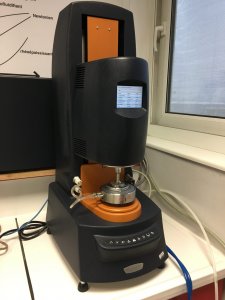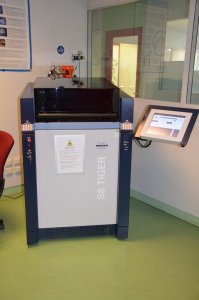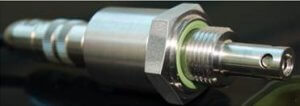Monitoring in-service lubricant wear
On rolling stock, many lubricants are used to keep parts working smoothly. These greases play a major role in extending equipment life cycles and can have vital safety functions by preventing wear and rust in contact surfaces. Lubricants are instrumental in maintaining air and water-tightness and in evacuating heat and impurities. Physico-chemical monitoring is vital to control the lubricants life cycle.
Four different types of monitoring have been developed by the Railway Test Agency (AEF), which partners Eurailtest in this field. These may be used to supplement each other and are selected in relation to the particular lubricant. The goal is to make the best possible use of the different oils and greases, containing maintenance intervals and keeping monitoring costs under control.
Read the full case study:
« Monitoring in-service lubricant wear ».

Laboratory monitoring :
This takes the form of tests performed in the laboratory to check the physical and chemical characteristics of the lubricants and flag up possible wear.
AEF has a range of cutting-edge equipment to perform analyses and experts capable of diagnosing the lubricating capacity of each product.

Maintenance centre analyses :
AEF has developed analysis methods that can be deployed directly in maintenance centres. Some analyses can be directly performed in the maintenance centres (wear metals using X-ray fluorescence, acidity using infrared spectrometry, etc.). These methods are developed and deployed by AEF and a day-to-day support can be offered.

Online monitoring :
This consists of remote diagnostics of lubricant characteristics via on-board sensors. With this technique, it is possible to monitor wear and tear “continuously” and thereby avoid sending vehicles unnecessarily to the maintenance sheds. The remote diagnostics of oils is currently being developed in our laboratory, with a short-term deployment objective.

Monitoring using modeling techniques :
This type of monitoring is based on the principle of modelling wear and tear in lubricants in relation to the loads to which they are exposed. Changes in specific physical and chemical characteristics are modelled applying knowledge available about the main contributing factors. By predicting how these characteristics will evolve, it is possible to schedule maintenance operations well in advance and ascertain lubricant potential in relation to use.
AEF develops innovative and complementary methods for monitoring lubricant wear and tear, with a view to optimising maintenance and reducing costs.
Eurailtest’s partner laboratories AEF and LEM are experts in physico-chemical analyses and offer tailor-made services.
Read the full case study:





 FR
FR